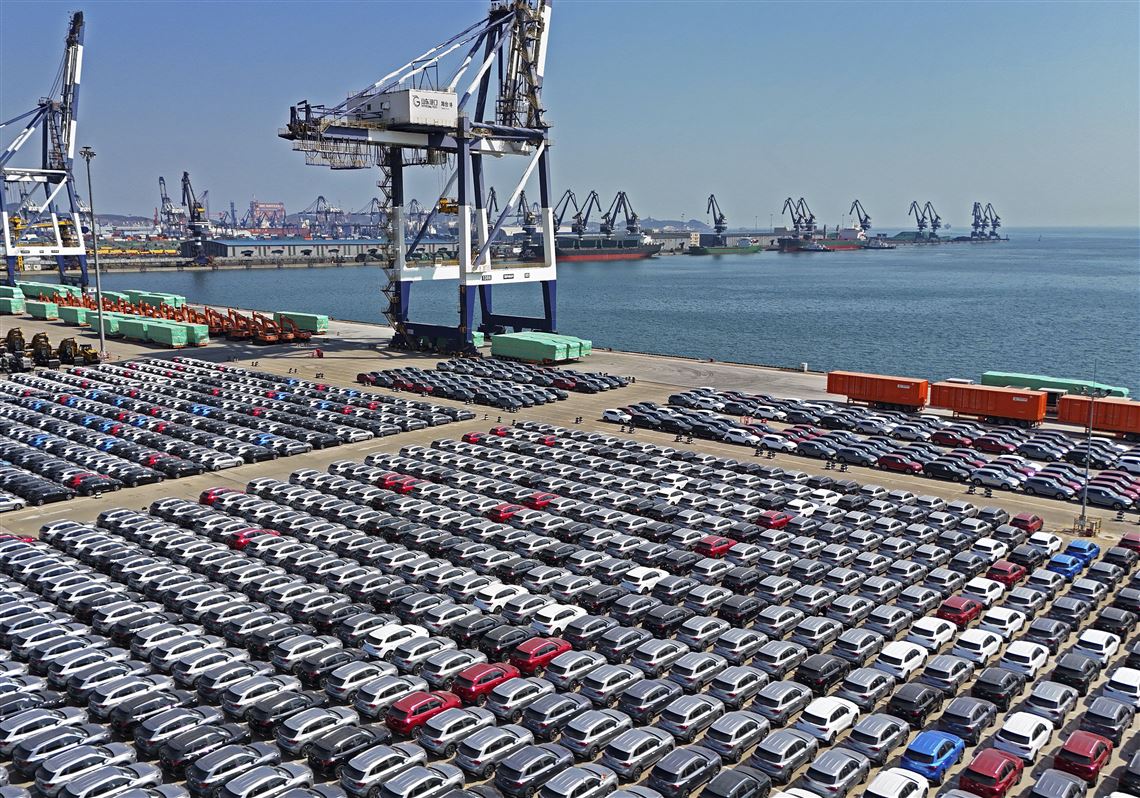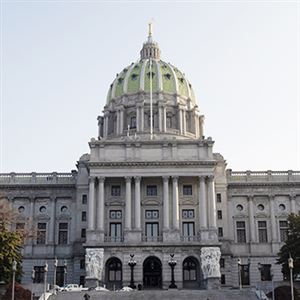The Constitution gives Congress the “power to lay and collect taxes, duties, imposts and excises,” but over time, Congress delegated the power to raise tariffs under certain conditions to the president.
On April 2, President Donald Trump declared one of those conditions to exist, invoking the International Emergency Economic Powers Act of 1977 (IEEPA) to address what he claimed was the national emergency posed by the country’s large and persistent trade deficit.
The United States has run a trade deficit since 1980. Given how long a period this is — 45 years, during which the American economy grew and grew — one has to wonder why it now is described as a national emergency that meets the conditions under which the IEEPA applies. There are no economic grounds for considering it an emergency.
Two kinds of tariffs
The tariffs announced on April 2 were of two kinds. The first was a 10% tariff on virtually all goods imported from most countries. The second was a large list of reciprocal tariffs that varied from country to country.
On April 9, President Trump put these reciprocal tariffs “on hold” for sixty days. While the president justified both kinds of tariffs as a response to the claimed crisis created by the country’s balance of trade deficits, they serve different purposes from one another.
The 10% across the board tariff is meant to generate revenue. It is not designed to affect particular policies of particular countries. That revenue, which is essentially a tax, is needed to help offset the effect of reductions in other tax rates that the President has included in his legislative “wish list.”
President Trump believes that these taxes will come out of the pockets of foreign exporters who will lower their prices on their exported goods sufficiently that none of the cost will show up in price increases to American consumers. But this is not consistent with the view of most economists who consider this tax as akin to a sales tax on American consumers.
The reciprocal tariffs are essentially negotiating tools that might achieve some political purpose. The levies placed on Canada and Mexico, for example, are targeted to changing the flow of immigrants and fentanyl entering from those countries.
92 years in a state of emergency
A bit of history is in order. Congress passed the act in 1977 because the Trading With the Enemy Act passed during the First World War was being used to extend presidential powers through the declaration of emergencies far beyond what Congress deemed appropriate. According to a special Senate report, the United States had technically "been in a state of national emergency since March 9, 1933" with four distinct declarations of national emergency in effect.
As a practical matter, the WWI act no longer applied to situations of imminent danger. It had, instead, become “a general grant of legislative authority to the President.”
The passage of the International Emergency Economic Powers Act was meant to limit the use of such a grant. The president’s discretion should be limited, said a report by the House Committee on International Relations.
Emergencies “are by their nature rare and brief and are not to be equated with normal ongoing problems. A national emergency should be declared and emergency authorities employed only with respect to a specific set of circumstances which constitute a real emergency, and for no other purpose. The emergency should be terminated in a timely manner when the factual state of emergency is over and not continued in effect for use in other circumstances. A state of national emergency should not be a normal state of affairs.”
History has proved that presidents can’t resist declaring national emergencies. Not only have the number of declared national emergencies increased since the passage of the IEEPA in 2077, so have their duration.
Challenges have been made to their use, but none have succeeded. One challenge was actually passed by Congress in 2019 as a resolution, but President Trump vetoed it. That challenge rejected a declaration that crossings at the Southern border constituted a national emergency.
In summary, the country’s balance of trade deficits hardly meet the condition of an emergency envisioned by the drafters of the International Economic Emergency Powers Act. Nevertheless, it is unlikely that the policies just announced by President Trump will be revoked by congressional action.
Little effect
None of the tariffs are likely to reduce our over-all balance of trade deficits, Trump’s reason for declaring an emergency. Those deficits simply reflect the purchases by foreigners of our government debt issue and of private investments that cannot be fully financed by Americans, and Americans’ rational economic choices to buy products from other nations.
Tariffs won’t reduce our dependence on foreign purchases of our debt. They may reduce purchases of foreign goods, but that will have negative effects on our economy even if it encourages more manufacturing here.
They do, however, provide an opportunity for the President to claim victory in any negotiations to lower their tariffs he has with various countries during the announced “lull.”
Jack Ochs is professor of economics, emeritus, at the University of Pittsburgh: jochs@pitt.edu. He lives in Point Breeze. His previous article was “The president sells snake oil (aka tariffs).”
First Published: April 15, 2025, 8:30 a.m.
















